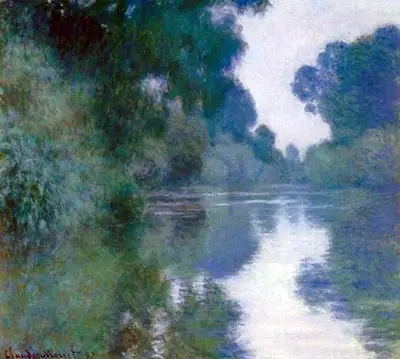In this boat, the French Impressionist painter Claude Monet worked tirelessly on his "The Seine in the Morning" series.
As with all of the other paintings in this series, this particular work was created at a certain time of the morning, and from a specific point along the river. Monet would work on one painting, then as the light steadily changed during the slow transition from dawn to the day, he would stop working on one painting, then move on to the next in the series until the light changed again.
The way that he did this was to number each painting to keep them in order, and he then carefully placed each one into grooves that he had built into the boat to hold the canvases in securely. A gardener who Monet had enlisted to act as his painter's assistant would take one canvas, set it in its slot, then hand Monet the next in the series. And so it was the two worked in this way for several mornings until the paintings were completed, excluding those where inclement weather prevented them from doing so.
Something that is quite notable about this painting and the other works in the series is their softness. The coolness of the blue and green shades combined with the pale warmth of the mauves and pinks work in tandem to create a mood so palpable that the viewer might almost feel the crisp air and fresh dew of the early morning hours.
All of the life along the Seine near Monet's home in Giverny courses through his brushstrokes, which seem to flow along with the same movement of the lush grasses along the river's edge. The branches of the willow trees hover above the surface of the water, and with their symmetrical reflection, looking upon the scene can for an instant feel a bit disorienting. However, this is no more disorienting than the feeling one might experience when standing at the river's edge, gazing out over the reflective surface of the water themselves.
As with most other works by Claude Monet, the misty morning scene of The Seine Near Giverny conveys a profound love of nature.
His careful usage of colour and brushstrokes create reflections, movements, and light that produce a sense of life, as though the scene were almost animated so that the viewer does not merely look at The Seine Near Giverny in these paintings, but actually experiences this place at dawn and the changing effects of the light as the sun makes its ascent.
Monet's sensitivity to light and to every aspect of the beauty to be found in the natural world transforms a very real landscape to something more like a soft, romantic paradise. However, with this painting and the others belonging to the same series, Monet shows us his ideal of beauty, and asks us to do more than passively look at the scene, but to engage with it actively.


